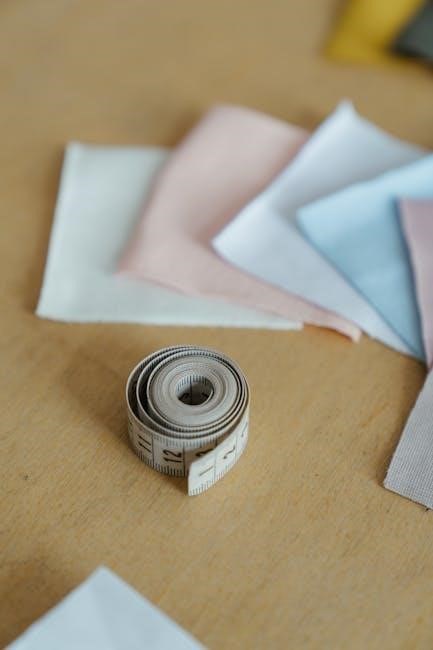
Discover a variety of free, downloadable PDF sewing patterns designed for children, offering modern, trendy, and customizable designs for clothes, accessories, and seasonal items, perfect for creative sewing projects.
1.1 Benefits of Using Free Sewing Patterns for Kids
Using free sewing patterns for kids offers numerous benefits, including cost-effectiveness, customization, and educational value. These patterns are often designed to be beginner-friendly, making them accessible to new sewists. They come with step-by-step instructions, size charts, and sometimes video tutorials, ensuring a smooth sewing experience. Free PDF patterns allow you to create unique, trendy outfits for your children without breaking the bank. They also encourage creativity and sustainability by repurposing fabric scraps or upcycling old clothes. Additionally, these patterns are perfect for teaching kids to sew, fostering their fine motor skills and creativity. With a wide range of styles and sizes available, free sewing patterns for kids make crafting personalized clothing fun and rewarding for the whole family.
1.2 How to Download and Use PDF Sewing Patterns
Downloading and using free PDF sewing patterns for kids is a straightforward process. Start by selecting a pattern from a trusted website, ensuring it includes instructions and size charts. Once downloaded, print the PDF on standard paper and assemble the pages by matching the guide markers. Cut out the pattern pieces according to the fabric requirements. Follow the step-by-step instructions for sewing, which often include diagrams and tutorials. Many patterns also offer video guides for clarity. Ensure accurate measurements and fabric selection for the best results. This method allows you to create custom-fit clothing efficiently, making it a fun and rewarding DIY project for you and your children.
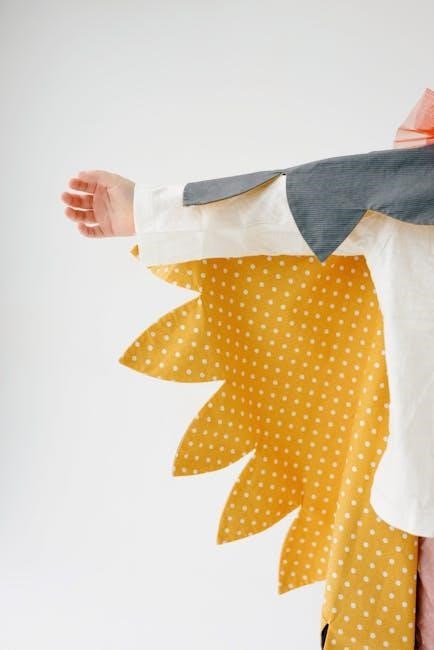
Popular Types of Children’s Sewing Patterns Available for Free
- Dresses, skirts, and tops for everyday wear.
- Pants, shorts, and overalls for casual outfits.
- Accessories like hats, bags, and hairbands.
- Seasonal patterns, including costumes and holiday-themed clothing.
- Formal wear like party dresses and suits.
2.1 Dresses and Skirts Sewing Patterns
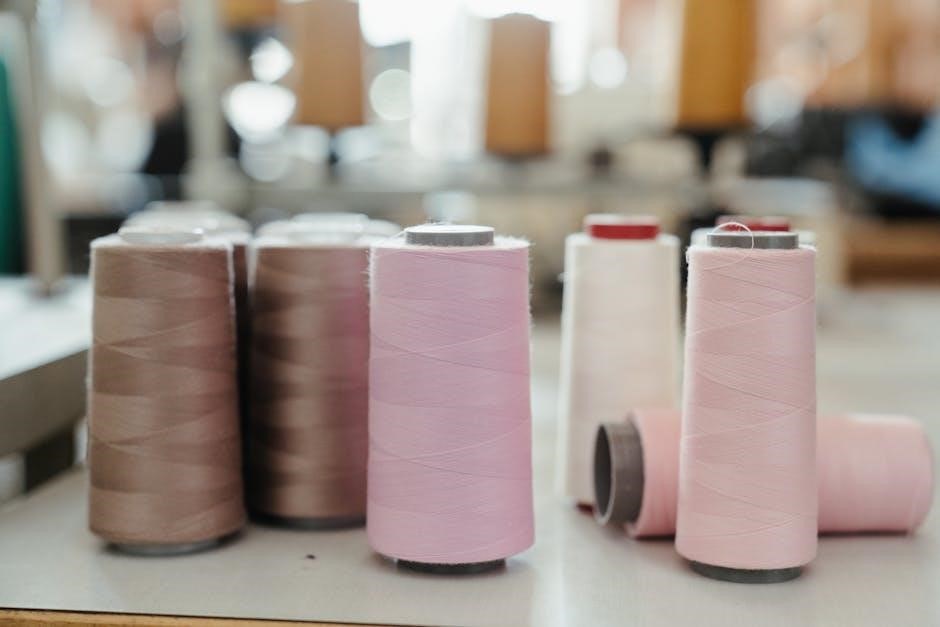
Discover a wide variety of free sewing patterns for children’s dresses and skirts, perfect for creating adorable and functional outfits. From simple sundresses to elegant party dresses, these patterns cater to different styles and occasions. Many designs feature adjustable waistbands, gathered skirts, and optional pockets, ensuring comfort and versatility. Skirts can be made in various lengths, from short and playful to long and formal. These patterns often include options for different sleeve styles, necklines, and embellishments, allowing for personalized touches. Ideal for both beginners and experienced sewists, these free PDF patterns provide clear instructions and measurements to ensure a perfect fit. They are great for everyday wear, special events, or even as gifts for loved ones.
- A-line dresses with floral prints.
- Tiered skirts for a whimsical look;
- Easy-to-sew sundresses for summer.
- Formal dresses for birthdays or weddings.
2.2 Tops, T-Shirts, and Blouses Sewing Patterns
Find a wide range of free sewing patterns for children’s tops, t-shirts, and blouses, designed for comfort and style. These patterns are perfect for everyday wear, offering simplicity and versatility. From basic crew-neck t-shirts to more elaborate blouses with ruffles or buttons, there’s something for every child. Many patterns include options for short or long sleeves, V-necks, or collared designs. Lightweight fabrics like cotton or jersey are ideal for these projects. Sewists of all skill levels can enjoy creating these practical yet stylish garments. Customize with pockets, embroidery, or appliques for a personalized touch. These patterns are great for filling your child’s wardrobe with unique, handmade pieces.
- Classic t-shirts for casual outings.
- Ruffled blouses for a feminine look.
- Henley shirts for cooler weather.
- Easy-to-make tunics for layering.
2.3 Pants, Shorts, and Overalls Sewing Patterns
Discover a variety of free sewing patterns for children’s pants, shorts, and overalls, perfect for creating comfortable and durable clothing. These patterns cater to different styles, from casual elastic-waist pants to stylish jeans with intricate details. Shorts patterns are ideal for warmer weather, offering options like cargo pockets or drawstring waists. Overalls provide a cute and practical choice, suitable for both playtime and special occasions. Many patterns include adjustable waistbands, ensuring a perfect fit as your child grows. They are designed for various skill levels, with options for customization such as pockets, buttons, or embroidery. Use breathable fabrics like denim or twill for a long-lasting finish.
- Jeans with detailed stitching for a professional look.
- Cargo shorts with multiple pockets for functionality.
- Bib overalls with button straps for timeless charm.
2.4 Accessories and Hats Sewing Patterns
Enhance your child’s wardrobe with free sewing patterns for accessories and hats, offering both style and functionality. From cozy beanies to stylish sun hats, these patterns are perfect for all seasons. Scarves, headbands, and hair accessories like bows and clips add a personalized touch. Hats can be customized with buttons, ribbons, or appliques for a unique look. Patterns for bags, such as backpacks or tote bags, provide practical solutions for daily use. Many designs are simple to sew, making them ideal for beginners. Use lightweight fabrics for summer hats or warm knits for winter accessories. These patterns are great for matching outfits or creating gifts. They offer endless possibilities for creativity and customization.
- Winter beanies with earflaps for added warmth.
- Summer sun hats with wide brims for UV protection.
- Reusable tote bags for eco-friendly use.
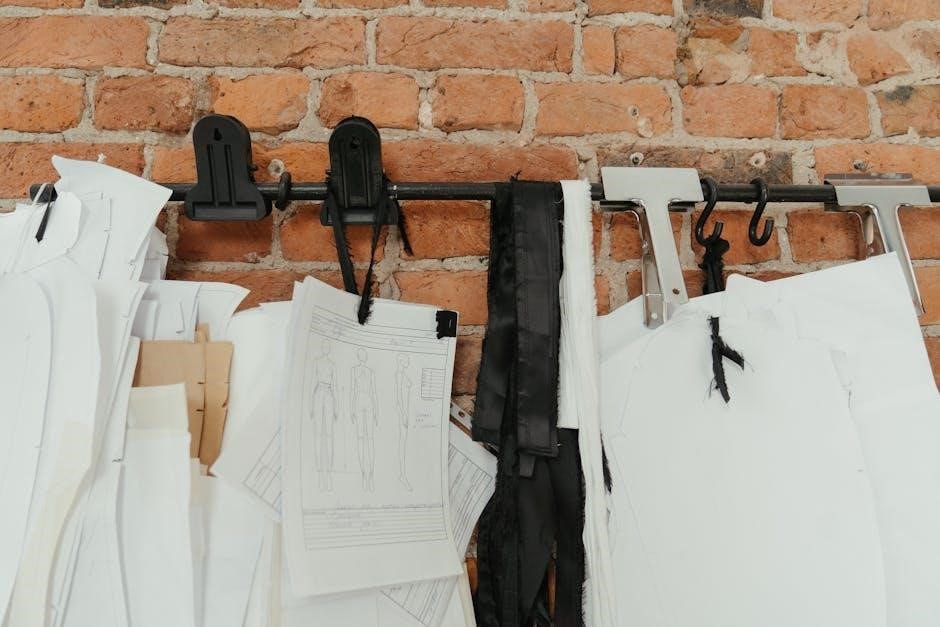
Step-by-Step Guides for Sewing Patterns
Discover detailed guides for sewing children’s patterns, from preparing fabric to finishing seams. Step-by-step tutorials ensure success, even for beginners, with tips for perfect stitching and fit.
3.1 Beginner-Friendly Tutorials for Kids’ Clothing
Beginner-friendly tutorials for kids’ clothing offer simple, clear instructions perfect for those new to sewing. These guides typically cover basic projects like t-shirts, pajamas, or simple dresses. Many tutorials include step-by-step photos or videos to help you understand techniques such as sewing straight lines, working with elastic, or adding buttons. They often focus on essential skills like measuring, cutting fabric accurately, and understanding pattern pieces. Tips on choosing the right fabric and tools are also included, making the process less intimidating. These tutorials are designed to build confidence, allowing you to progress from simple to more complex projects over time. Starting with these basics ensures a smooth and enjoyable sewing journey.
3.2 Video Tutorials for Complex Patterns
Video tutorials are invaluable for tackling complex sewing patterns, offering visual guidance that enhances understanding. They provide detailed demonstrations of intricate techniques, such as zippers, buttonholes, and gathering, which are often challenging for beginners. Many tutorials include close-up shots and slow-motion sequences to clarify tricky steps. Additionally, videos often cover advanced projects like tailored jackets or elaborate party dresses, breaking them into manageable parts. These resources also frequently include tips on fabric selection and troubleshooting common mistakes. By following along with an expert, sewists can master complex patterns with confidence. Video tutorials make advanced sewing accessible, turning daunting projects into achievable creations for sewists of all skill levels, ensuring successful outcomes.
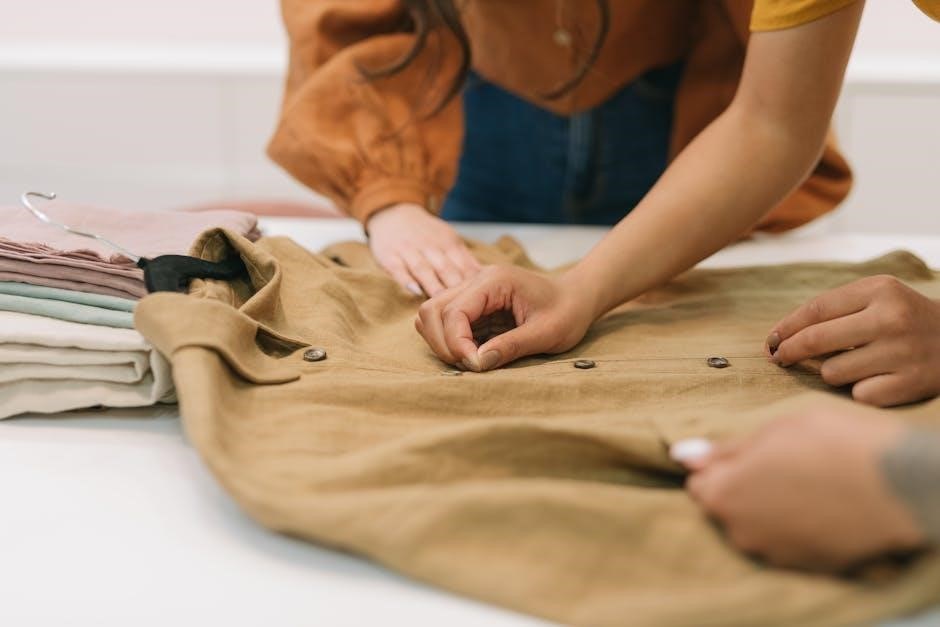
Tools and Materials Needed for Sewing
Sewing requires essential tools like a sewing machine, scissors, measuring tape, pins, threads, and needles. Fabric, zippers, and buttons are also key materials for creating clothes.
4.1 Essential Sewing Tools for Beginners
For beginners, essential sewing tools include a reliable sewing machine, sharp fabric scissors, rotary cutter and mat, measuring tape, pins, and hand-sewing needles. A sewing gauge ensures accurate hems, while a seam ripper helps fix mistakes. Iron and ironing board are crucial for pressing fabrics. Using good-quality tools prevents frustration and improves results. For safety, consider blunt-tipped scissors if sewing with children. These basics provide a solid foundation for creating children’s clothing from free PDF patterns, making the sewing process enjoyable and efficient.

4.2 Recommended Fabric Types for Children’s Clothing
When sewing children’s clothing, choosing the right fabric is crucial for comfort and durability. Cotton is a popular choice due to its softness, breathability, and ease of care. Knit fabrics, like jersey or interlock, are ideal for stretchy garments such as t-shirts and leggings. For dresses and skirts, lightweight fabrics like voile or chambray work well. Fleece is great for winter clothes, offering warmth without heaviness. Organic cotton is a good option for sensitive skin. Always pre-wash fabrics to ensure shrinkage and colorfastness. Bright, fun prints can add personality to outfits, making sewing more enjoyable. Selecting the right fabric ensures a perfect fit and happy wearers.
Size Charts and Measurement Guides

Size charts and measurement guides help ensure proper fit for children’s clothing. Accurate measurements are key to avoiding alterations and achieving professional results in sewing projects.
5.1 Understanding Size Charts for Kids’ Patterns
Size charts for kids’ sewing patterns provide standardized measurements to ensure a perfect fit. These charts typically include dimensions for height, chest, waist, and hip. Understanding how to interpret these charts is crucial for selecting the correct pattern size. Most patterns are designed based on average measurements for specific age groups, but variations may occur due to differences in body types. Always compare your child’s measurements to the chart before cutting fabric. Patterns often include multiple sizes, allowing for flexibility and growth. Pay attention to finished garment measurements to account for ease and comfort. Using a size chart ensures your handmade clothing fits well and looks professional.
5.2 How to Measure Your Child for the Best Fit
Measuring your child accurately is essential for achieving a great fit in handmade clothing. Use a flexible tape measure, ensuring it’s not too tight or loose. Start with the chest measurement, wrapping the tape around the fullest part of the chest, under the armpits, and across the shoulder blades. Next, measure the natural waistline, typically 1-2 inches above the belly button. For pants, measure the inseam from the crotch to the desired pant length. Additional measurements like shoulder-to-shoulder and head circumference may be needed for specific patterns. Always compare these measurements to the pattern’s size chart for the best results. Taking multiple measurements ensures accuracy, especially as kids grow quickly.

Tips for Working with PDF Sewing Patterns
Always ensure your printer is set to actual size when printing PDF patterns. Use a cutting mat and tape to assemble pattern pieces accurately and efficiently.
6.1 How to Print and Assemble PDF Patterns
Printing and assembling PDF sewing patterns requires attention to detail to ensure accuracy. Start by printing the pattern at 100% scale to avoid resizing issues. Use high-quality paper and ensure your printer settings are set to “actual size” or “no scaling.” Once printed, sort the pages by the page numbers or labels provided. Use scissors or a craft knife to cut along the edges of each page. Assemble the pattern by matching the alignment markers or grid lines, using clear tape to secure the pieces together. Double-check that all pages are included and properly aligned before cutting your fabric. This step ensures your pattern pieces fit together seamlessly, making the sewing process smoother and more enjoyable.
6.2 Adjusting Patterns for Different Sizes
Adjusting PDF sewing patterns for different sizes ensures a perfect fit for your child. Start by comparing your child’s measurements to the size chart provided in the pattern. Use techniques like grading between sizes or adjusting length and width to customize the fit. For example, if your child is taller, add length to the torso or sleeves. Use the pattern’s seam allowances to make small adjustments without altering the overall design. Test the fit by sewing a muslin prototype before cutting the final fabric. Many patterns also include optional modifications, such as adding or removing features. By making these adjustments, you can create garments that flatter your child’s unique proportions and preferences. This step ensures comfort and confidence in the final result.

Troubleshooting Common Sewing Issues
Troubleshooting common sewing issues like fabric misalignment or sizing errors ensures professional results. Double-check pattern measurements, fabric alignment, and seam allowances before sewing. Adjust as needed for a perfect fit.
7.1 Fixing Fit Issues in Kids’ Clothing
Fitting issues in children’s clothing can arise from incorrect measurements or pattern adjustments. Always measure your child accurately and compare with the size chart. If garments are too tight or loose, adjust seam allowances or grade the pattern. For length issues, modify hemlines or add contrasting bands. Muslin prototypes are helpful for testing fit before cutting final fabric. Additionally, consider fabric stretch and drape when choosing materials. Online tutorials and sewing forums often provide solutions for common fit problems, ensuring garments are comfortable and well-fitting. Regularly checking fit during sewing and making small adjustments can prevent major alterations later.
7.2 Solving Common Sewing Mistakes
Common sewing mistakes, such as incorrect seam allowances or uneven hems, can be easily fixed. Always double-check measurements and pattern alignment before cutting fabric. If seams are misaligned, carefully unpick the stitches and re-sew. For uneven hems, use a ruler to mark a straight line and re-hem. Fabric bunching can be resolved by adjusting tension or using a walking foot. Remember to backstitch at the start and end of seams to prevent unraveling. Small mistakes can often be hidden with decorative stitching or topstitching. Practice patience and take time to review your work before finishing a project.
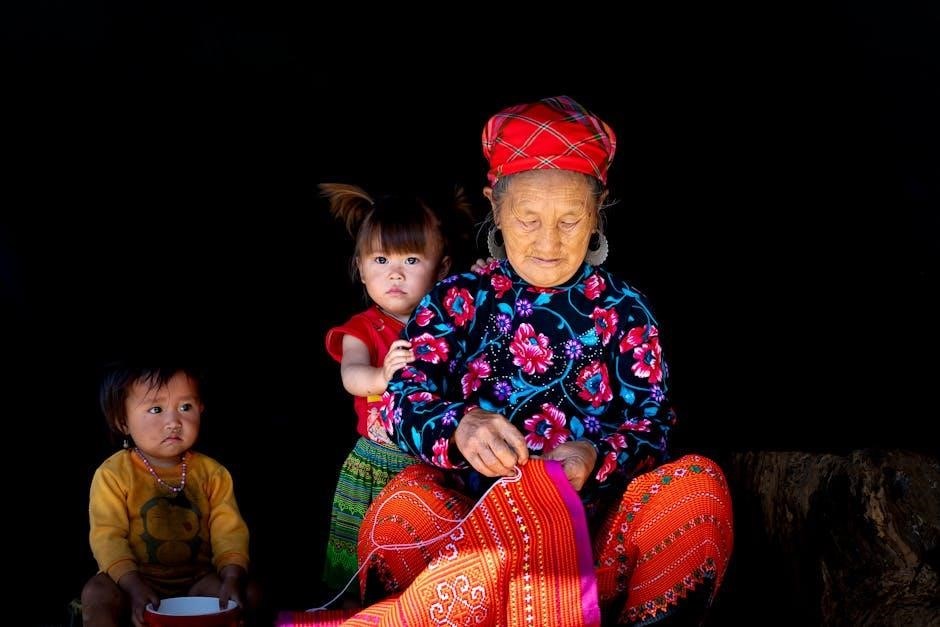
Seasonal and Holiday Sewing Patterns
Discover festive sewing patterns for kids, including Halloween costumes, Christmas dresses, and holiday-themed accessories, all available as free PDF downloads.
8.1 Halloween Costume Patterns for Kids
Halloween costume patterns for kids offer a wide range of creative and spooky designs, from superheroes to adorable animals. These free PDF sewing patterns are perfect for crafting unique outfits that stand out. Many designs are simple to sew, making them ideal for beginners. Popular options include witch hats, ghostly robes, and pumpkin costumes, all available in various sizes. Some patterns also include accessories like capes or masks to complete the look. Whether your child prefers a cute or eerie design, these patterns provide endless possibilities for a memorable Halloween. They’re a great way to save money while creating personalized costumes that your kids will love. Find these patterns on sewing websites and get ready to stitch up some festive fun!
8.2 Christmas and Holiday Outfit Ideas
Christmas and holiday outfit ideas for kids are a delightful way to celebrate the season with style. Free PDF sewing patterns offer a variety of festive designs, from cozy winter dresses with holly prints to tailored suits with velvet trims. Accessories like Santa hats, reindeer antlers, and snowflake scarves add a magical touch. These patterns are perfect for creating personalized outfits for family gatherings, holiday parties, or special events. Many designs are simple enough for beginners, ensuring a fun and stress-free sewing experience. Whether it’s a Christmas dress, Hanukkah outfit, or New Year’s ensemble, these patterns help you craft memorable looks that blend comfort and style, making the holidays even more special for your little ones.
Sewing Patterns for Special Occasions
Discover charming sewing patterns for special occasions like birthdays, weddings, and parties. Find adorable outfits for boys and girls, including suits, dresses, and accessories. Perfect for creating memorable looks, these free PDF patterns are easy to download and sew, ensuring your child stands out at any event.
9.1 Party Dresses and Formal Outfits
Find stunning free sewing patterns for children’s party dresses and formal outfits. These designs include elegant dresses with intricate details, sophisticated suits, and stylish accessories. Perfect for birthdays, weddings, or holidays, these patterns offer a wide range of styles to suit every occasion. From flowing ball gowns to tailored suits, you can create outfits that make your child feel special. Many patterns are designed for sewists of all skill levels, with clear instructions and customizable options. Download these free PDF patterns to craft beautiful, one-of-a-kind formal wear for kids, ensuring they stand out at any event.
9.2 DIY Gifts and Accessories for Kids
Create thoughtful DIY gifts and accessories for children using free sewing patterns. From adorable stuffed animals to personalized backpacks, these patterns offer a variety of creative ideas. Sew cute hair bows, hats, or scarves to complement their outfits. DIY gifts like soft toys, baby blankets, or personalized pouches make heartfelt presents. Many patterns are designed specifically for kids, ensuring safety and durability; Use vibrant fabrics and playful designs to craft unique accessories that match their personalities. These free PDF patterns are easy to download and perfect for beginners, allowing you to create something special without breaking the bank. DIY sewing is a fun way to give meaningful, handmade gifts for birthdays, holidays, or just because.
Concluding your journey through free children’s sewing patterns, remember to explore more designs, share your creations, and enjoy the joy of handmade clothing and keep sewing!
10.1 Encouraging Kids to Participate in Sewing
Encouraging children to participate in sewing can foster creativity, patience, and practical skills. Start by letting them choose fabrics or patterns from free PDF sewing resources, making the process fun and personalized. Use simple tools and projects designed for their age, ensuring safety and supervision. Celebrate their efforts, even if the results are imperfect, to build confidence. Teach them the value of handmade items and the joy of creating something unique. Engaging kids early can spark a lifelong interest in sewing and DIY projects, while also strengthening your bond through shared creative activities.
10.2 Finding More Free Sewing Patterns Online
To find more free sewing patterns for children, explore online platforms like Pinterest, Etsy, and sewing blogs. Many designers offer complimentary PDF patterns for kids’ clothing and accessories. Use search terms like “free kids sewing patterns” or “PDF sewing patterns for children” to discover a wide range of options. Join Facebook groups or online sewing communities, where members often share links to free resources. Additionally, websites like Craftsy and AllFreeSewing frequently feature free patterns. Always verify the pattern’s sizing and instructions before downloading. These platforms are great for finding unique, high-quality patterns to expand your sewing projects for children.